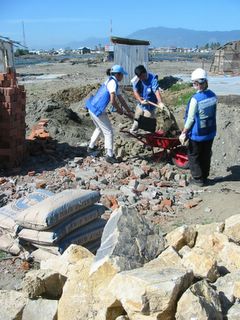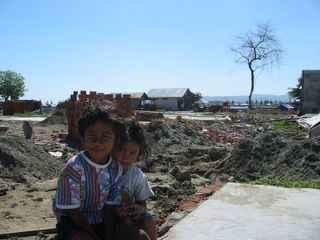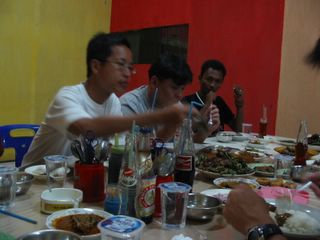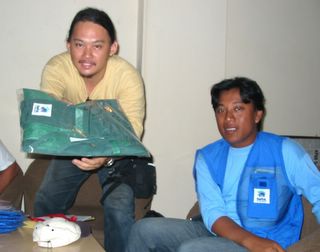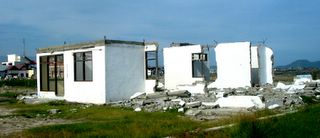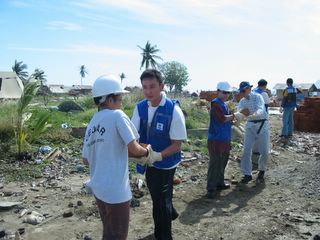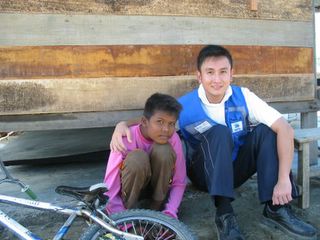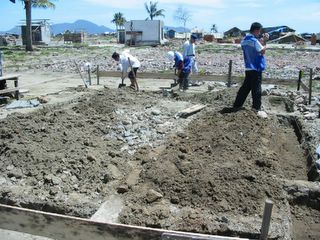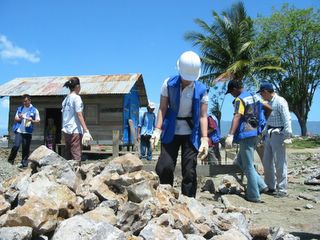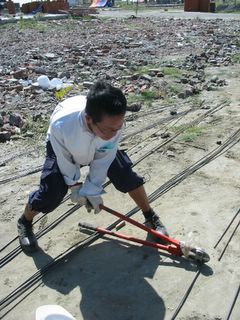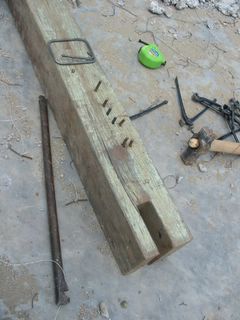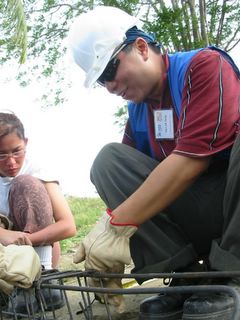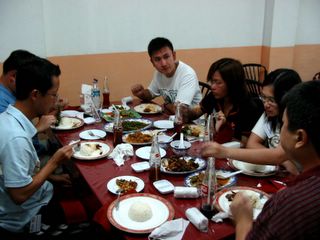Mixing the cement
After our short mid-morning break, Team Pembantuan was split into two separate groups to mix the cement. I was assigned to the group working at land plot #140. We had to shovel several wheelbarrow-loads of pasir (sand) and mix them evenly with the biru strip or semen (cement) powder. All the "ingredients" had to be in specific ratio - and this ratio was different for cement to be used in different parts of the house. I thought that was rather confusing, but thankfully, the local skilled workers were on-site to help and remind us of the correct proportions to use! In the case of the foundation cement mixture, it was 3 wheelbarrows of sand to 2 bags of cement.
Once the mixture of pasir and biru strip were well mixed, we dug a crater into the middle of the mixture, and then poured air (water) into it. We then left our mini-volcano alone for a few minutes, allowing the water to seep in. Then, slowly but steadily, we started to mix the cement, using a technique apparently devised by some Singaporeans during other Habitat builds. This method was called the "merry-go-round cement mixing technique." :) But humour aside, mixing cement manually was no easy feat! As soon as the water got into the mixture, every scoop of the shovel seemed twice as heavy. We had to take turns to constantly stir the mixture, ensuring uniformity in its composition as well as preventing it from solidifying prematurely.
Once the wet cement was ready, we scooped it into buckets, and then poured them into the trenches (which we had dug earlier) and over the stones which we had helped to place inside.
Later on, Adele, Wai Yan and I were also tasked to distribute water, small bucket by small bucket, from a water distribution truck to rusty water barrels located at the different building sites.
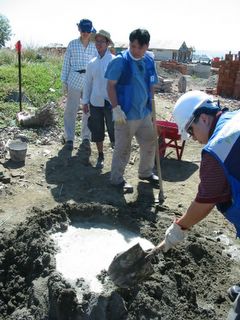
Lark ensuring that our mini-volcano does not crack open, while Hock Teck, Alvin and Hiew take a short breather
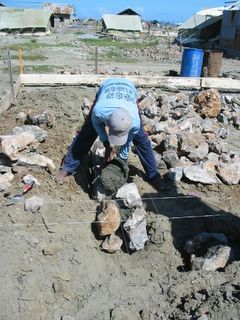
A local skilled worker pouring our cement mixture into the trenches over the foundation stones
